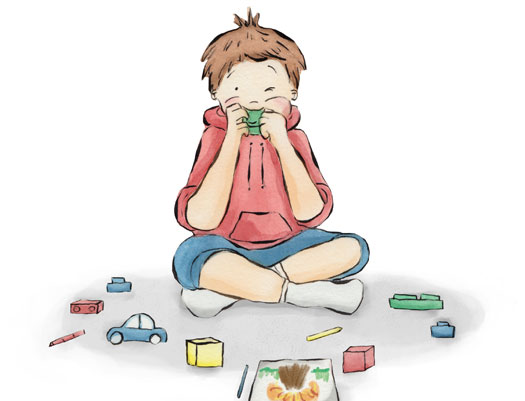Reflexes
THE SUCK AND ROOTING REFLEXES - Feeding and Speech
As a parent you will be very familiar with the Suck and Rooting reflexes: they are the two reflexes that help your baby establish feeding after birth.
The Rooting reflex has two branches, one on either side of the face. When touched it triggers the head to turn, the eyes to divert and the mouth to open.
Once the mouth has opened the suck - pull action that releases the milk is known as the Suck reflex. This involves movements of the tongue, pallet, cheeks and lips, creating a full oral workout.
Together the Suck and Rooting reflexes trigger the development of sensation and movements in the face, mouth, lips and tongue. This allows each area to both isolate and move together in a sequential way. This produces biting, chewing and manipulation of food in preparation for swallowing and crucially for sounds, which eventually turn into words and speech.
Persistent activity in the Rooting reflexes affects the sensitivity of the face and mouth to touch, food textures and temperature. The tongue tends to remain in a forward position in the mouth and this can result in excessive dribbling.
The Suck reflex pushes the tongue forwards and backwards in the mouth. This is an efficient action for liquid diets, but if this persists it can interfere with the isolation of the tongue and a failure to develop a point at the end of the tongue. The tongue is crucial as it moves food around the mouth so that food ends up in the right position for biting and chewing. Eventually the child learns to position the tongue in very complex and subtle patterns for speech.
The mouth is a highly sensitive area of the body and children use it to evoke a feeling of calm, i.e. sucking their thumb and clothes. A persistent need to suck on objects can be related to retention of the Suck and Rooting reflexes.

Persistent Suck and Rooting Reflexes may lead to:
- Difficulty with feeding, chewing and swallowing.
- Speech and articulation problems.
- Sensitivity to food, temperatures and textures.
- Involuntary movements of the tongue in association with the hands when concentrating.
- Difficulty chewing with the mouth closed.
- Hypersensitivity of the face, lips and mouth.
- Persistent dribbling.
- Persistent need to mouth, suck or chew objects.
Copyright © 2026 | Privacy Policy


